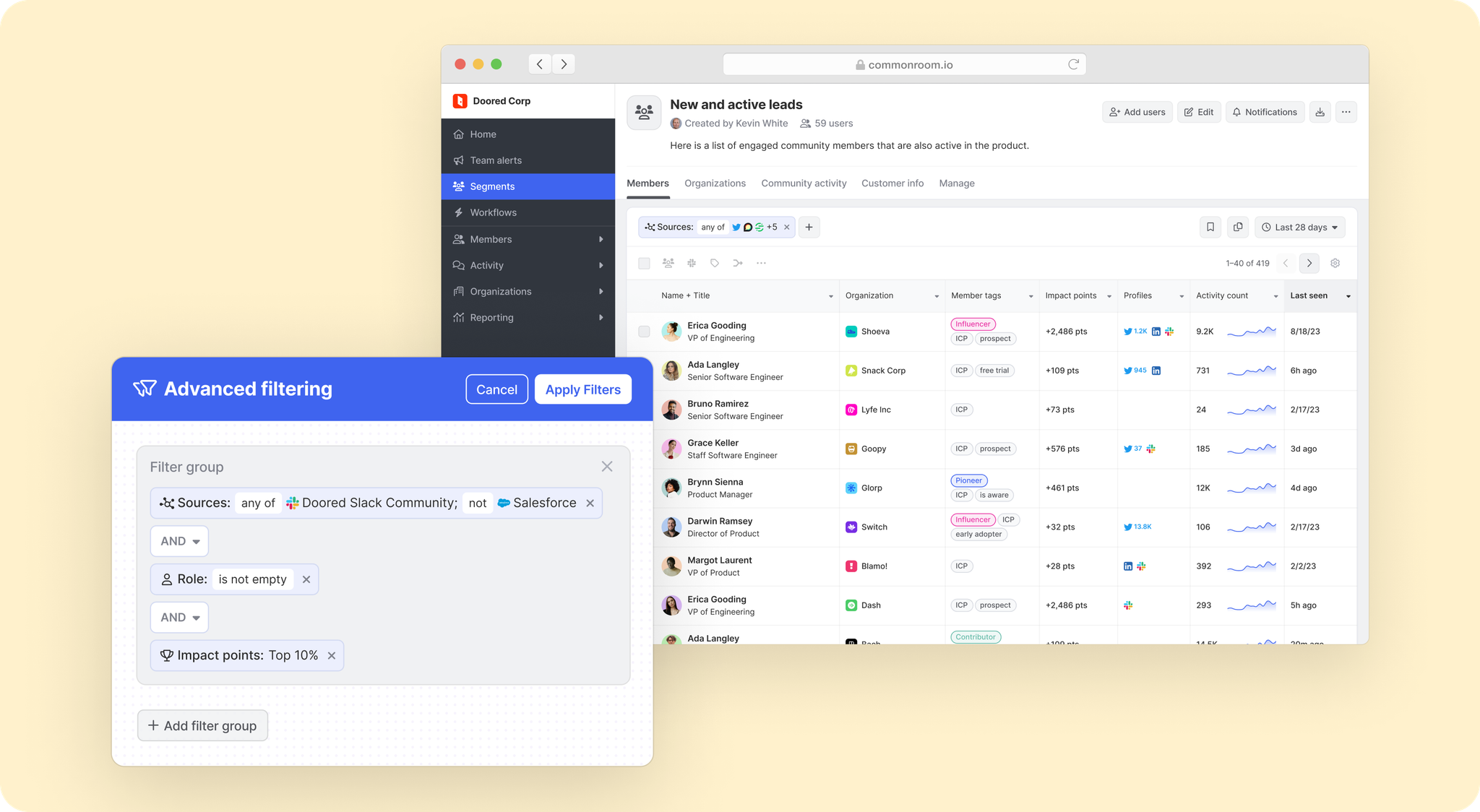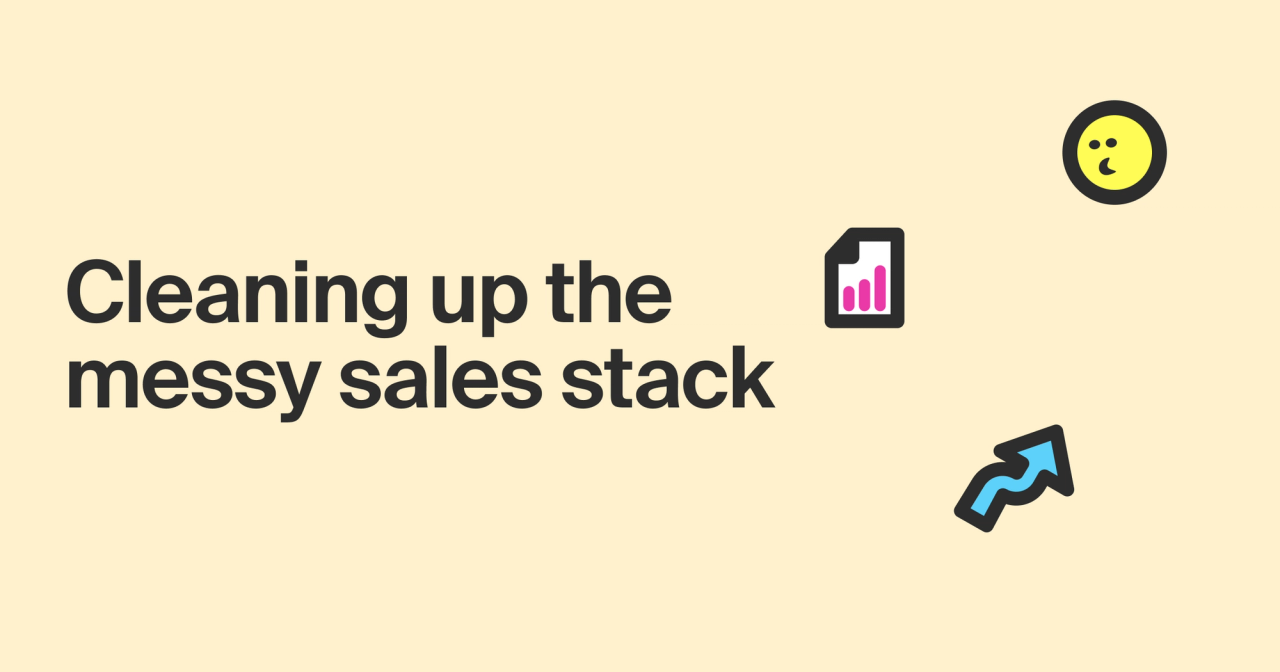Sellers are supposed to sell, not code.
But it feels like technical knowledge is a prerequisite for go-to-market teams if they want to access the best leads—especially when companies with a product-led sales motion have rich intent signals buried in a data warehouse.
To book meetings with hot leads, reps need to be able to get their hands on the information they need—and make sense of it once they do—fast. That shouldn’t include learning the ins and outs of SQL (Structured Query Language, not sales-qualified leads).
Keep reading to learn:
- How salestech is creating more problems than it solves
- Why sales teams are struggling to stay productive
- What you need to simplify the sales process
The modern sales stack is messy
The average sales rep uses 10 tools to close a deal.
There are the tried and true marketing automation and CRM tools. These are table stakes.
Then there are the various account-based marketing and prospecting tools. Plus the sales forecasting and lead management tools. Oh, and don’t forget the sales enablement and sales productivity tools.
On top of that, you’ve got single-serving technologies designed for specific use cases, such as tracking job changes.
But that’s just the beginning for product-led sales teams.
If your go-to-market strategy is based on free trial sign-ups or freemium products, you no doubt have tools designed to get product usage data into sellers’ hands.
This can take many forms. Maybe reps are tabbing back and forth between analytics dashboards. Or maybe they’re getting trained on yet another point solution. Or worse—waiting for their overworked data team to pull another query and add the results to a spreadsheet.
It’s too much and not enough at the same time.
The constant context switching slows down sales velocity and leads to analysis paralysis. Two-thirds of sales reps say they’re overwhelmed by all the sales apps being thrown at them.
And despite all the time and money spent, the same old gaps remain. Data is siloed and chained to individual tools, incomplete and missing key context, and impossible to action on without pushing it to yet another technology.
Engineers and developers are living in a golden age of helpful, AI-powered copilots. Sellers deserve the same.
Time is the enemy
Sales reps only spend 28% of their weeks actually selling.
The rest of their time is spent on the nitty gritty details of sales: researching prospects, prioritizing leads, and all the other tasks necessary to turn new opportunities into closed-won deals.
This is vital work. The days of cold calls and spray-and-pray outreach are long gone. Today’s sellers have to be laser-focused on buyer intent, buyer fit, and buyer context to win.
But sales efficiency and productivity are paramount. It’s all too easy to waste valuable time researching product-qualified accounts and sifting through user data: new sign-ups, power users, contacts by department and seniority.
It’s even easier when you’re using tools that aren’t designed for how sales teams operate.
Reps can switch back and forth between dashboards, but even if they find the data they’re looking for, there’s no way to take action on it then and there. They either have to manually push the data somewhere else or sync records in Salesforce one at a time.
Either way you slice it, product usage data generally requires multiple steps (or multiple requests to the data team) to make it usable.
Sellers have their hands full. They don’t need another tool that will help them pan for gold—they need key buying signals served up to them and made ready to act on.
How to simplify sales with Common Room
Common Room delivers all the insights sales teams need. Just as importantly, it allows you to act on them without logging into another tool.
Sellers need to see everything all in one place. Common Room’s integrations with digital channels, product data sources, and CRM technologies make it possible to centralize all user activity in a single location—as well as send data from Common Room to your sales technology of choice.
Meanwhile, AI-powered identity resolution and enrichment deanonymize users and transform siloed data points into unified user profiles.
“Common Room gives me a daily feed of all the prospects I want to engage from multiple channels all in one place. It saves me so much time and energy as far as prospecting and organizing my day.”
—Gozie Nwachukwu, Head of Sales Development at Temporal

Buyer intent is one thing. Buyer fit is a whole other ballgame. Sellers need to be able to quickly scan for the signals that matter and filter opportunities based on digital interactions, product usage, customer relationship, and more.
Common Room’s filters and tags make it easy to drill down into users based on job title, role, industry, company size, annual revenue, and other key criteria. Teams can automatically tag individuals as ideal personas, economic buyers, product-qualified leads, and more.
And context for every user—from their behaviors across channels to the sentiment of their conversations—is automatically surfaced, categorized, and made readily available.
“The insights brought together by Common Room ensure our team can engage with the right person at the appropriate time with an offer that truly aligns to their needs.”
—Allie Beazell, Marketing Chief of Staff and Director of Developer Marketing at Census

Collecting data doesn’t make it useful. Acting on it does. Common Room helps sales teams stay up to date on user activity in real time via automated team alerts, whether it’s a spike in product usage or a key contact switching jobs.
Users can be added to reactive segments where sellers can put them in an Outreach sequence, send them to Salesforce, fire off a direct message, and more. At the same time, automated workflows make it easy to streamline engagement and analysis at scale based on customizable inputs.
“Not only does Common Room help us save time by getting to the most important conversations faster, it has become core to how we prioritize which organizations we spend our time with."
—Tim Hughes, Vice President of Sales at Temporal

Ninety-four percent of sales organizations want to consolidate their tech stacks. It’s not hard to see why.
Sellers don’t need yet another tool added to the pile. They need to replace the ones that aren’t built for the way they work.
Operationalize your sales strategy with Common Room
Ready to see how Common Room helps you sell faster, smarter, and easier?


